Program ended
Archaeological Institute of America
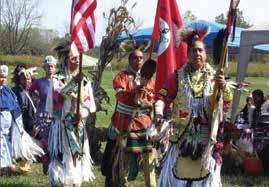
2016
For the diligent work to preserve, protect, and promote the Black Creek Indian Site through the implementation of an interpretive plan and cultural resource program that involves close collaboration with state and national officials
Read more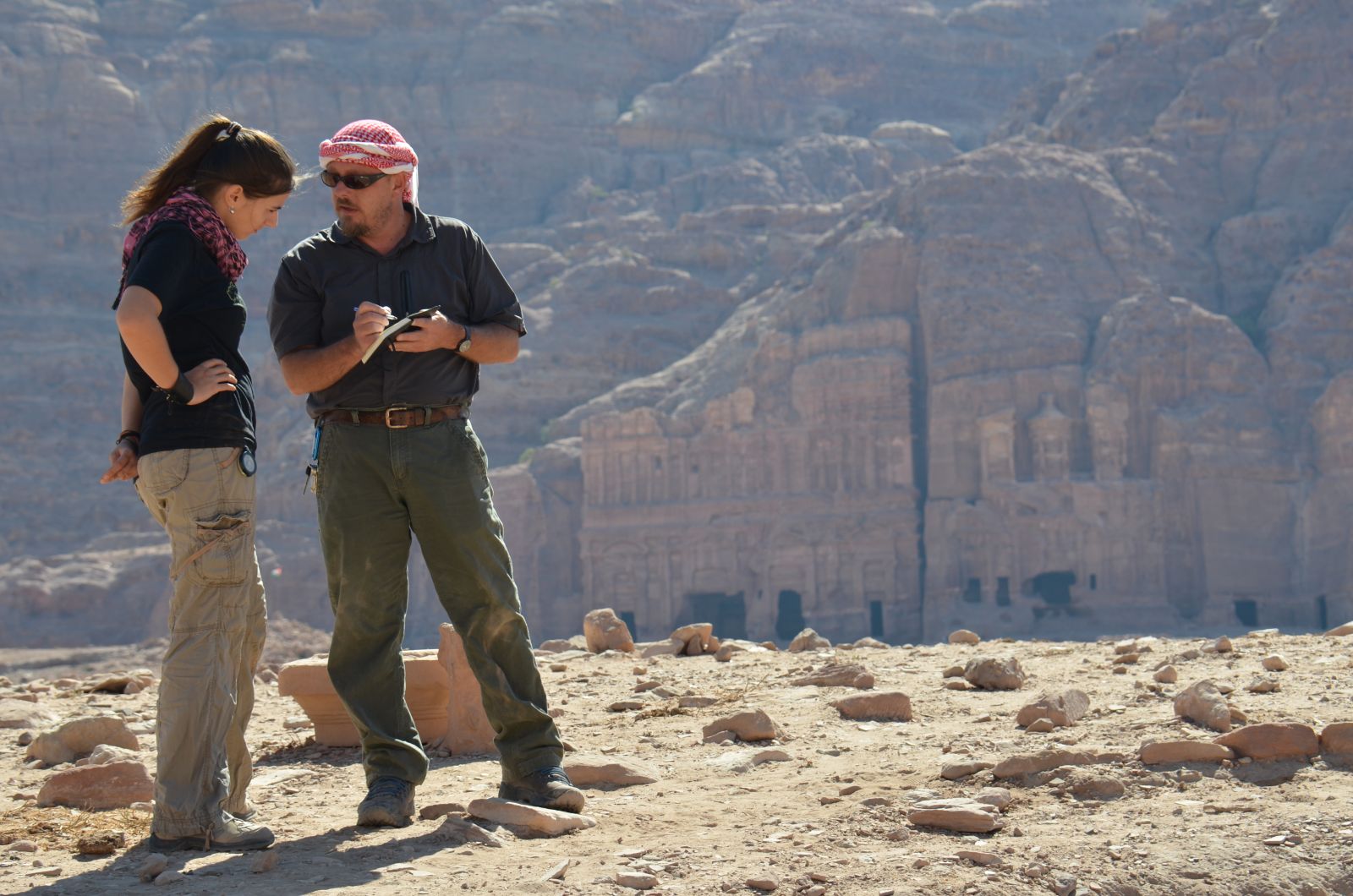
2015
The AIA Conservation and Site Preservation Committee is pleased award the 2015 Best Practices in Site Preservation Award to the Temple of the Winged Lions Cultural Resource Management (TWLCRM) initiative, which was launched in 2009 as a cooperative project by ACOR, the Department of Antiquities of Jordan, and the Petra Archaeological Park to rescue the Temple of the Winged Lions, a majestic Nabataean temple built on a promontory overlooking Petra’s city center. The Archaeological Institute of America hopes that TWLCRM’s efforts will serve as an inspiration to others as they look for ways to preserve archaeological heritage.

2014
The Archaeological Institute of America is pleased to present its 2014 Award for Best Practices in Site Preservation to the California Archaeological Site Stewardship Program (CASSP) for its grassroots efforts to involve and train local communities in the preservation of archaeological sites in California.
CASSP, a statewide program directed by the Society for California Archaeology, trains local volunteers to visit assigned sites on public lands regularly and to report the conditions there to the local supervising archaeologist. By regularly monitoring sites, CASSP ensures that any potential problems are detected early and can be corrected quickly, thus limiting the extent of damage. CASSP operates under the philosophy that public lands belong to all of us and that we therefore need to find a responsible way to engage the public in site protection. Trained site stewards provide an additional interface between the recreational user and the agency archaeologists so that archaeological resources can be protected from harm and managed for future generations. Since the program’s inception in 1999, nearly 1,400 people have participated in 75 CASSP workshops at locations across the state.
The Archaeological Institute of America hopes that CASSP’s efforts in community stewardship will serve as an inspiration to others as they look for innovative ways to preserve our archaeological heritage. The California Archaeological Site Stewardship Program fully merits the 2014 Award for Best Practices in Site Preservation for its exemplary work.
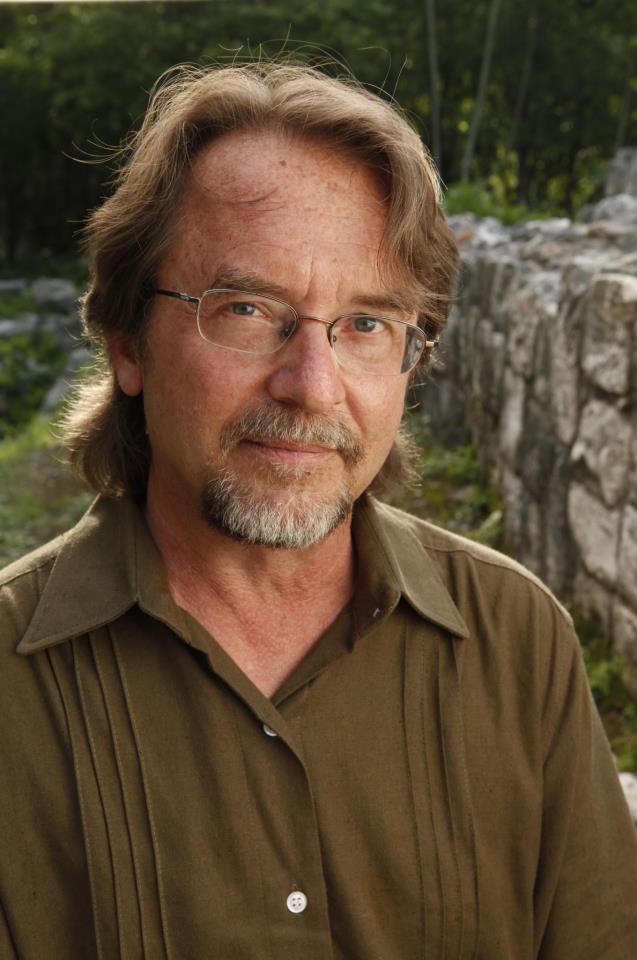
2013
The Archaeological Institute of America is pleased to present its 2013 Award for Best Practices in Site Preservation to George Bey, professor of Anthropology at Millsaps College and codirector of the project at Kaxil Kiuic, for his exemplary work at this Maya site in Mexico.
Bey’s comprehensive conservation efforts at Kaxil Kiuic demonstrate that archaeology can be used not only to preserve cultural resources but also to protect endangered environments. In 1999, Bey spearheaded efforts to purchase and develop 4,500 acres of land, which included the archaeological remains at Kaxil Kiuic, into a biocultural reserve. While maintaining the integrity of the natural environment around the site, Bey has developed a method of archaeological conservation that focuses on preserving standing architecture. Any damage that occurs to buildings through natural processes is monitored and mitigated. In keeping with the conservation ethos of the project, all archaeological materials uncovered at the reserve are processed in an environmentally friendly laboratory facility. By keeping archaeological development as low impact as possible, Bey and his colleagues are ensuring the long-term preservation of the pre-Columbian resources at the site.
In addition to his impressive direct conservation efforts, Bey has organized and implemented numerous educational and outreach activities for the benefit of the local communities around Kaxil Kiuic. He encourages site visits, supports a scholarship program that allows local students to continue their education, and works with local communities and landowners to inform them of the importance of conserving archaeological resources.
The Archaeological Institute of America honors George Bey with the 2013 Award for Best Practices in Site Preservation and hopes that Bey’s colleagues will strive to emulate this dedication to preservation.
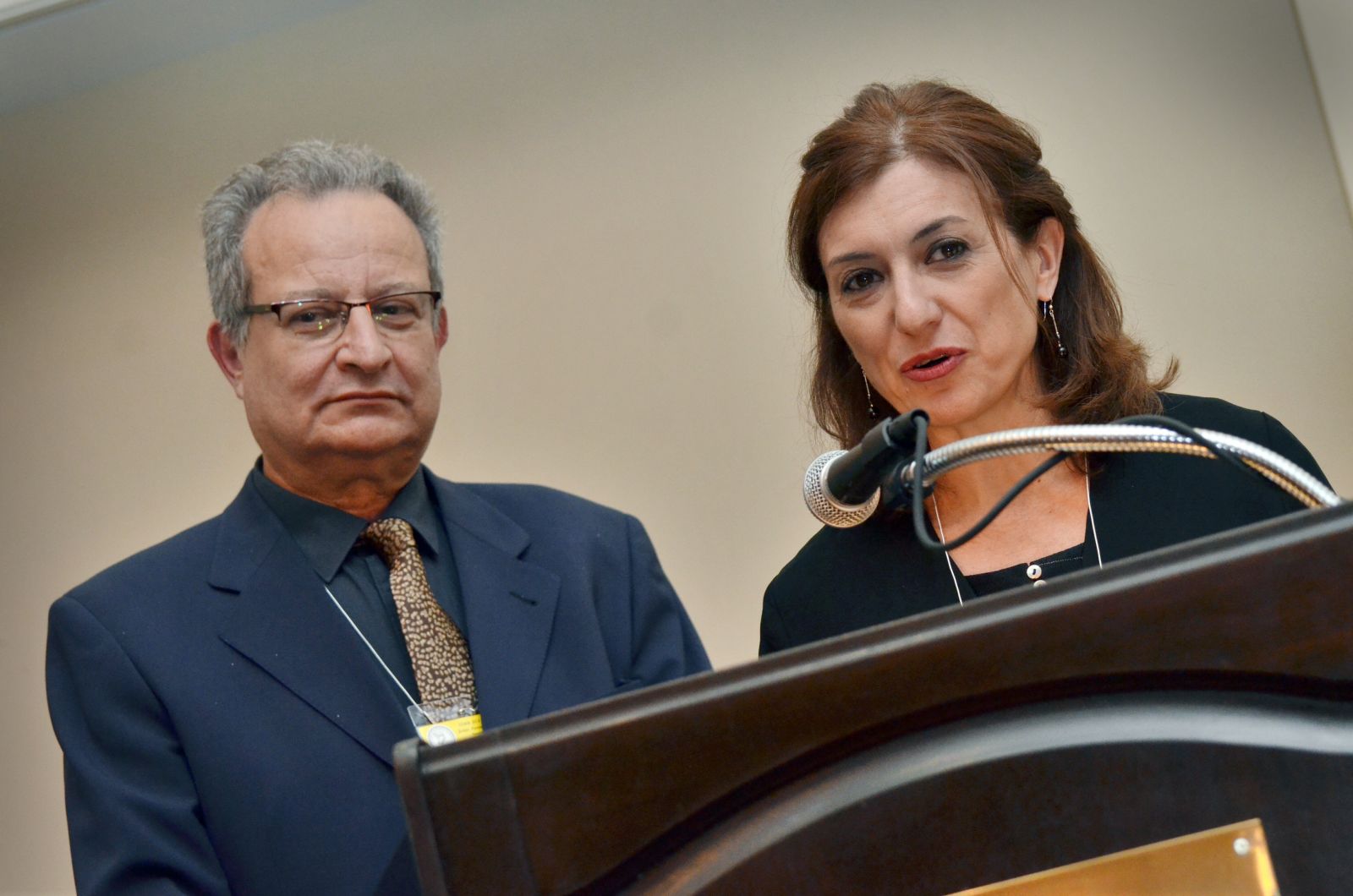
2013
The Archaeological Institute of America is pleased to present its 2013 Award for Best Practices in Site Preservation to Cristina Vidal Lorenzo, professor of art history at the University of Valencia and codirector of the La Blanca Project, and Gaspar Mũnoz Cosme, professor of architecture at the Polytechnic University of Valencia and codirector of the La Blanca Project, for their exemplary work at the ancient Maya site of La Blanca in Guatemala.
Vidal and Muñoz take a holistic approach to site preservation by combining scientific research and conservation of cultural heritage with economic development and educational opportunities for local communities. The conservation program they have developed is integrated at all stages of research, ensuring the protection and stabilization of archaeological structures and resources before, during, and after excavation. In addition to engaging in archaeological conservation efforts, Vidal and Muñoz work to maintain the integrity of the natural landscape surrounding La Blanca by preventing deforestation and conducting research on the paleoenvironment.
Additionally, Vidal and Muñoz demonstrate a remarkable dedication to local communities by including them in the research, excavations, and development at La Blanca. The project’s outreach programs provide in situ conservation training, educational workshops to promote natural and cultural heritage, and a tour-guide training course to help secure the long-term preservation of this archaeological site while also improving the area’s economic opportunities. An interpretive center with signage informs visitors about this important site and the project’s conservation efforts.
The Archaeological Institute of America honors Cristina Vidal Lorenzo and Gaspar Mũnoz Cosme with the 2013 Award for Best Practices in Site Preservation and hopes Vidal and Mũnoz’s excellent initiatives will inspire other professionals in the field.
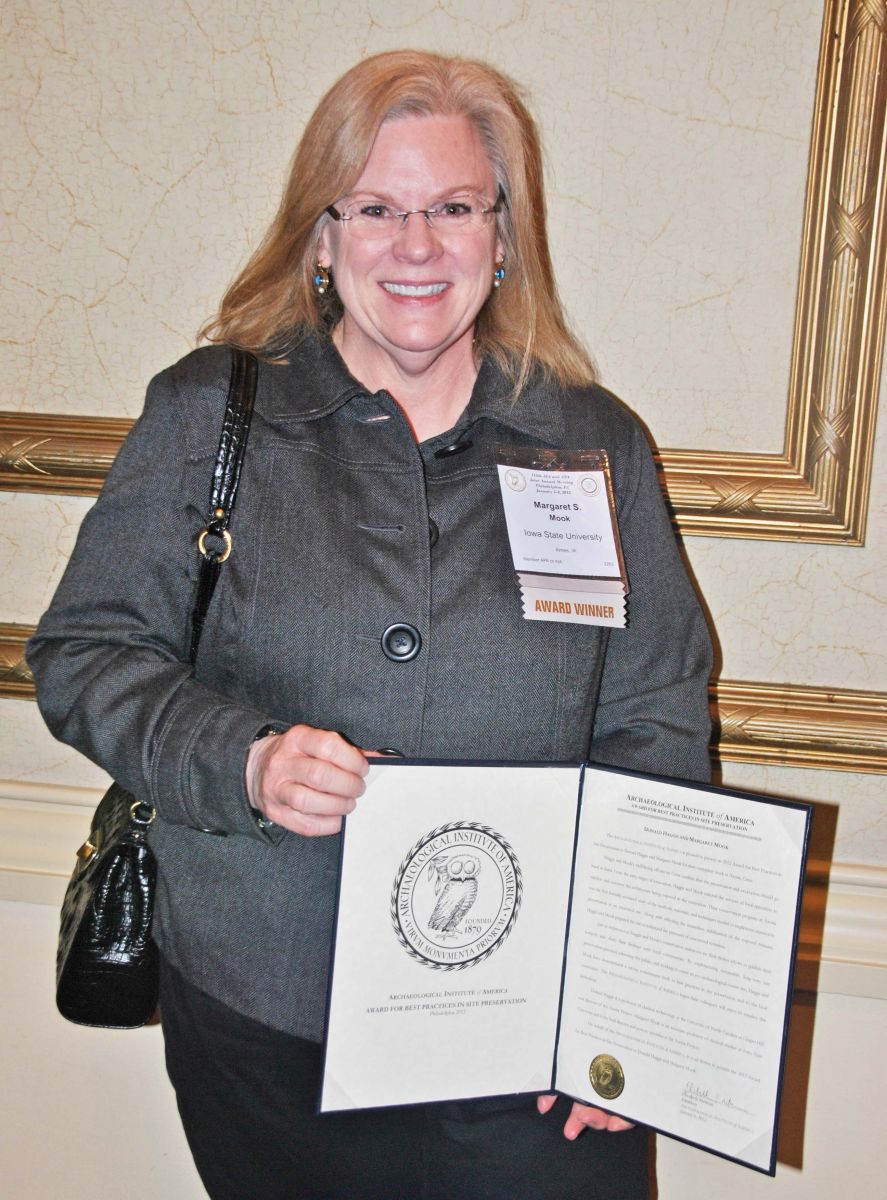
2012
The Archaeological Institute of America is pleased to present its 2012 Award for Best Practices in Site Preservation to Donald Haggis and Margaret Mook for their exemplary work at Azoria, Crete.
Haggis and Mook’s trailblazing efforts on Crete confirm that site preservation and excavation should go hand in hand. From the early stages of excavation, Haggis and Mook enlisted the services of local specialists to stabilize and conserve the architecture being exposed in the excavation. Their conservation program at Azoria was the first formally reviewed study of the methods, materials, and techniques needed to implement sustainable preservation at an excavated site. Along with effecting the immediate stabilization of the exposed remains, Haggis and Mook prepared the site to withstand the pressures of year-round visitation.
Just as impressive as Haggis and Mook’s conservation endeavors are their tireless efforts to publish their research and share their findings with local communities. By implementing sustainable, long-term site preservation practices, educating the public, and working to create an eco-archaeological tourist site, Haggis and Mook have demonstrated a strong commitment both to best practices in site preservation and to the local community. The Archaeological Institute of America hopes their colleagues will strive to emulate this dedication.
Donald Haggis is a professor of classical archaeology at the University of North Carolina at Chapel Hill and director of the Azoria Project. Margaret Mook is an associate professor of classical studies at Iowa State University and is the field director and pottery specialist at the Azoria Project.
On behalf of the Archaeological Institute of America, it is an honor to present the 2012 Award for Best Practices in Site Preservation to Donald Haggis and Margaret Mook.
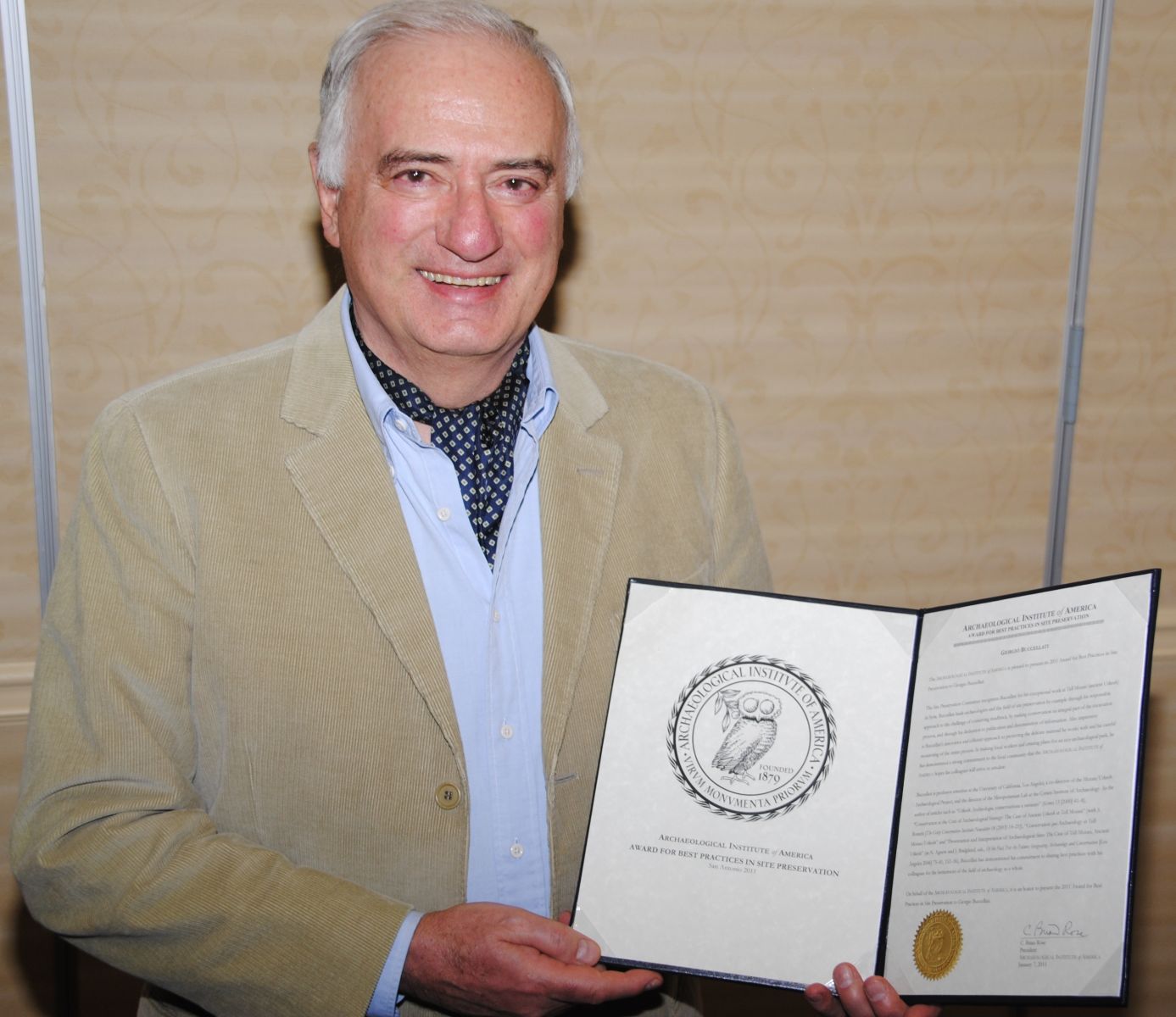
2011
The Archaeological Institute of America is pleased to present its 2011 Award for Best Practices in Site Preservation to Giorgio Buccellati.
The Site Preservation Committee recognizes Buccellati for his exceptional work at Tell Mozan (ancient Urkesh) in Syria. Buccellati leads archaeologists and the field of site preservation by example through his responsible approach to the challenge of conserving mudbrick, by making conservation an integral part of the excavation process, and through his dedication to publication and dissemination of information. Also impressive is Buccellati’s innovative and efficient approach to protecting the delicate material he works with and his careful monitoring of the entire process. In training local workers and creating plans for an eco-archaeological park, he has demonstrated a strong commitment to the local community that the Archaeological Institute of America hopes his colleagues will strive to emulate.
Buccellati is professor emeritus at the University of California, Los Angeles, a co-director of the Mozan/Urkesh Archaeological Project, and the director of the Mesopotamian Lab at the Cotsen Institute of Archaeology. As the author of articles such as “Urkesh: Archeologia, conservazione e restauro” (Kermes 13 [2000] 41–8), “Conservation at the Core of Archaeological Strategy: The Case of Ancient Urkesh at Tell Mozan” (with S. Bonetti [The Getty Conservation Institute Newsletter 18 (2003) 18–21]), “Conservation qua Archaeology at Tell Mozan/Urkesh” and “Presentation and Interpretation of Archaeological Sites: The Case of Tell Mozan, Ancient Urkesh” (in N. Agnew and J. Bridgland, eds., Of the Past, For the Future: Integrating Archaeology and Conservation [Los Angeles 2006] 73–81, 152–56), Buccellati has demonstrated his commitment to sharing best practices with his colleagues for the betterment of the field of archaeology as a whole.
On behalf of the Archaeological Institute of America, it is an honor to present the 2011 Award for Best Practices in Site Preservation to Giorgio Buccellati.